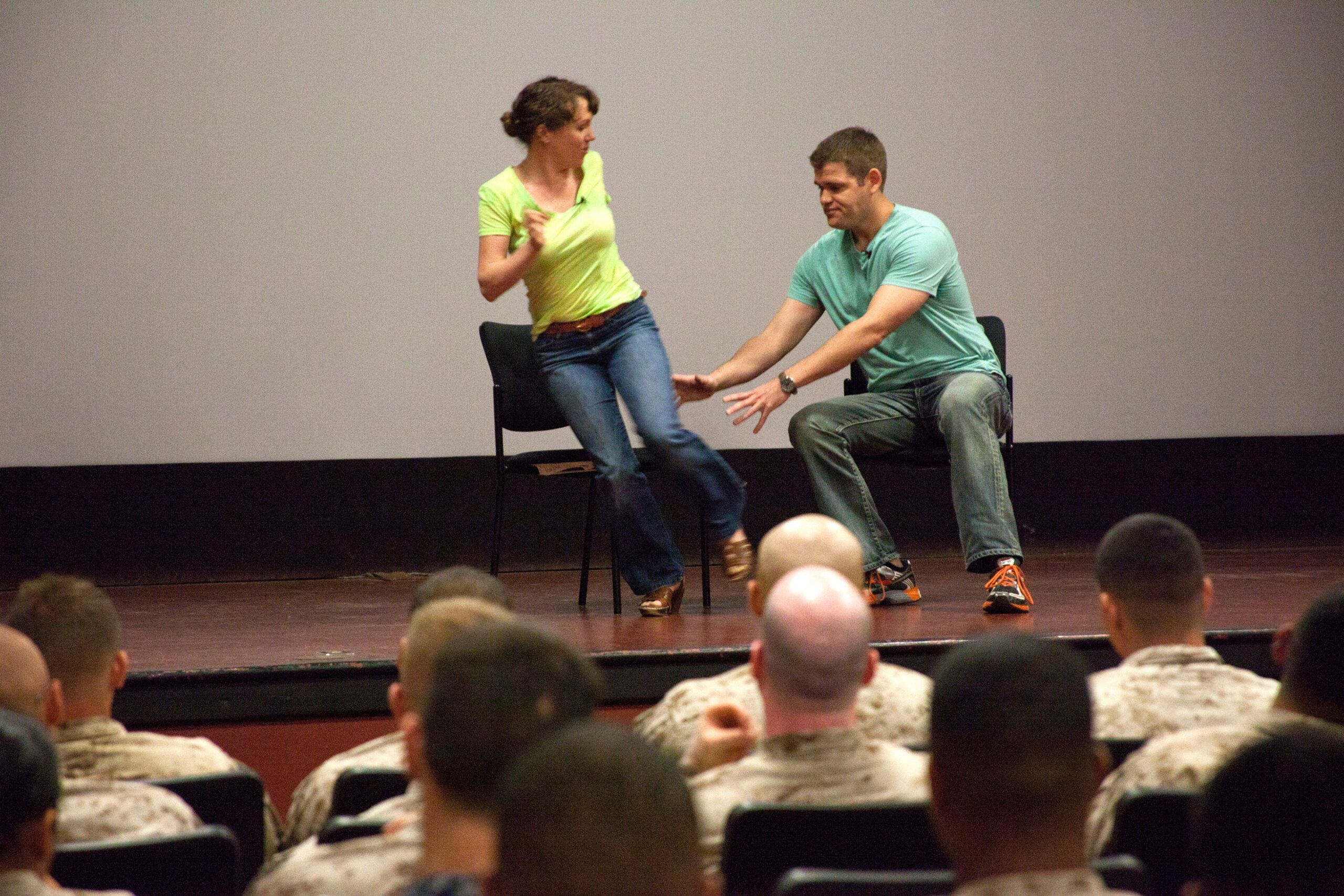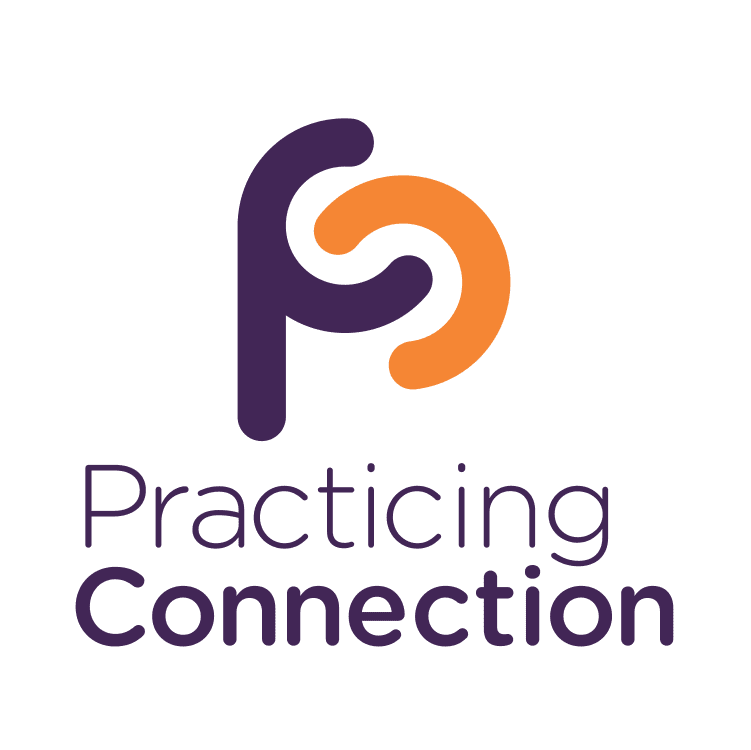Join us in the “Practicing Connection” community. When you sign up you’ll receive a monthly email focused on practicing connection. The email will help us establish a shared rhythm and some shared experiences in our community.

- This event has passed.
Yes, And vs. Yeah, But
March 14

Listen
About This Episode

(Season 5, Episode 11)
Saying “yeah, but” is a habit that has become second nature to many of us. Yet we know that validating and building on ideas and offers from others is an effective way to build high-trust relationships and teams.
In this practicast (Season 5, Episode 11), special guest Shannon Hughes of Enlivened Studios talks with Jessica about how the applied improvisation can help us in our lives and work.
Transcript
Read More[music]
Jessica Beckendorf: Saying “Yeah, But” is a habit that has become second nature to many of us, yet validating and building on ideas and offers from others is an effective way to build high trust relationships and teams. Hi, everyone. This is Jessica Beckendorf, and welcome to this week’s Practicing Connection practicast, where we highlight a specific practice you can use in your life and work.
“Yes, And” is an important guide that makes improv theater scenes work no matter how bizarre the suggestions. We’re all improvisers. I firmly believe that we are all improvisers, going about our days in a world which provides some guidelines and boundaries like laws and policies and roles, but no scripts. Today we’re going to discuss how the “Yes, And” mindset can make an impact on our collaborative efforts, our workplace culture, and our relationships.
I’m so excited about the guests we have for this next few episodes. We met through an organization we both belong to called the Applied Improvisation Network. Applying the principles of improv to my work has been so important to me since I started performing and noticed big changes within myself. That’s why I’m excited we were able to persuade our guest to join us this month.
Shannon Hughes is a facilitator and consultant with a calling to nurture people-first company cultures in companies of all shapes and sizes. In her practice, Enlivened Studios, she brings strategic business mentorship and experiential teaching practices to incite easeful collaboration, I love that term, and embolden transformational leadership. Shannon will be guiding us through the practice in a few minutes, but first let’s learn a little bit more about it.
Hi, Shannon, welcome and thank you so much for being here. “Yes, And”, as you know, is is ubiquitous in improv. Can you share a summary of what the concept is about?
Shannon Hughes: Yes. The improv principle, “Yes, And”, it’s kind of nuanced, actually. The word “yes” doesn’t always mean to agree, but is rather a gesture of receiving, accepting what we call offers in improv. I know we’ll talk a little bit more specifically about that concept of offers in a future episode, but essentially, offers are ideas, character attributions, information about a relationship or a space that actors give to one another so that the scene has what it needs to progress. In the concept of “Yes, And”, the “yes” is accepting those offers, and the “and,” the word “and” is to build and progress the story, “Yes, And.”
In a scene with two people, for example, that’s never been seen before and will never be seen again, improvisers are constantly “yes, anding.” We’ve made it a verb, “yes, anding” each other to keep the scene going. Think of it as receive and add, receive and add. Imagine if two people started a scene without this practice, right? One actor comes on stage and says to the other, “Hey, mom,” and the other actor says, “I’m not your mom, I’m your babysitter.” Well, the audience will probably be asking for their money back, right? That’s not a story anyone wants to see, two people vying for their own version of what’s true in the scene. Their own story of what they think will be funny or entertaining, it would probably be a disaster.
When those same actors “yes, and” each other, it’s magic. Receiving each other’s ideas and building on them to grow the story together as an ensemble. Now when you think about this in a business or a team setting, the opportunities for collaboration and partnership are endless. Imagine a strategic planning session or a brainstorm around what’s next for a product or a service. Imagine the idea sharing and the sticky notes and the connection that might come from “Yes, And” in those situations. Because remember, “yes” doesn’t mean agreement. It simply means to receive and acknowledge. Many of my clients have introduced “Yes, And” into the way they communicate and do business together, and it can have a huge impact.
Jessica: What are some of the pitfalls people can fall into when they first start adopting a “Yes, And” mindset?
Shannon: As humans, we are wired. We’re not wired for “Yes, And.” We are wired for “Yeah, But.” So often we hear what someone’s saying and instead of saying “yes, and…,” right? We say, “Ah, yeah, but,” and what that does is when you say that word “but”, it nullifies everything you’ve just said beforehand, and it can shut down or stonewall people based on what you think is right or what you think is true. We’re all in some way, shape or form guilty of this. In any situation, I know I am. I’m not perfect at this. Certainly, it’s a practice.
“Yeah, But,” it says, “Yes, I heard you, but I have a better idea.” Or it says, “Yes, I get what you’re saying, but I stopped listening because I’m so committed to my version of the story.” The word “but” can be really tricky and limiting, and sometimes it can be hurtful and non-inclusive. It can shut someone down and make them receive that as saying, “Oh, I’m not welcome here, so I’m just not going to contribute.” In a work setting or anywhere really, then you’re losing out on that person’s worldview and that person’s contributions.
It’s funny when I teach this principle of “Yes, And”, they’re often surprised. I say, I give them the instruction to use the words “Yes, And,” but just by default, that word “but” sneaks in there all the time. It’s like muscle memory. This is really a practice because it’s a hard one to break.
Jessica: Yes. Let’s get started. Please walk us through the “Yes, And” practice that you’ve prepared for us today.
Shannon: Okay. Jessica, I’m going to need your help with this one, and I’m glad you are an improviser as well and a fabulous facilitator. We’ll do two versions of this, and I’m sure your listeners can see where this is going, but stay with us because again, this is a practice, and embodying it and getting the words out of your mouth is really helpful. This is somewhat of a playful way to do that.
The first scenario, Jessica, let’s pretend like we are siblings, and we’re planning our uncle’s 75th birthday party. To make this fun, let’s not worry about budget or timelines or gravity. Anything goes. Okay. For this round, we’re going to plan the party by “yeah, butting” each other. As best we can, let’s actually use those words. Here it goes. I’ll kick us off.
“Susie, oh, my gosh. I am so excited for uncle Bob’s 75th birthday. I was thinking that we should get a marching parade to march down right in front of his house on the day of his birthday. What do you think?”
Jessica: “Yeah, but they throw candy, and he’s diabetic. I think we should maybe just, let’s have elephants, let’s just bring elephants, a parade of elephants.”
Shannon: “Huh? Elephants? Yeah, but Uncle Bob, I don’t think he’s a big fan of zoo animals. He’s really against all of that. I don’t know. I think maybe what we do is instead of elephants, why don’t we get all of his best friends to dress up in party hats and do like a flash mob in front of his house instead?”
Jessica: “Yeah, but, you know, we can’t hear anymore, right? That’s not going to work. Maybe, here we go. I got it. Instead, let’s just take him skydiving.”
Shannon: We see how this goes back and forth. Here’s the second scenario. Again, I’m sure you can see where this is going. This time we’re going to play with “Yes, And.” Just to shift things up a little bit, let’s pretend like we are two leaders in a company and we are planning our retreat. There’s a company retreat, and we want to get people together to brainstorm what’s next for the organization. Okay, so here goes.
“Sally, the retreat is coming up in a few weeks, and we really have to get to planning. I was thinking that we should maybe have the retreat at the beach house, the beach house that we rented last year.”
Jessica: “Yes, I love that idea, and maybe while we’re at the beach house, we could have it catered by the restaurant a few doors down, who does all like local food.”
Shannon: “Yes, and I know that that was such a hit last year. I think that that restaurant actually is serving Mediterranean food now, which is going to be such a hit with the team. In addition to getting the food from that restaurant, maybe we could have one of those specialty cocktail people come over and make those craft cocktails for everyone so they can enjoy a drink, if they drink, of course. What do you think of that?”
Jessica: “Yes, and if they don’t drink, let’s make sure they’ve got a menu of mocktails. I think that could really be a hit for the folks who don’t drink.”
Shannon: “Yes, and I’m glad that you added that contribution because that’s really important to remember.”
Obviously, we were playing it up a little bit, and I just want to remind your listeners two quick things. One is, sometimes it feels funny saying “yes, and,” but there are enough and [chuckles]. There are a number of ways to say “yes, and.” You can say it nonverbally. You can say with a nod, like you’re acknowledging with a facial expression or something nonverbal. A “yes” can sound something like, “Ah, mm-hmm.” “Yes, and” might sound a little like it’s forced sometimes, but give it a shot and play around with different ways of saying it. They’re both important words, “yes” and “and”, but it’s the “and” that really sticks out like a sore thumb when you hear “but”.
However, you want to say it, it’s really that if you can shift from “but” to “and,” that’s almost more critical, and you can play around with the front end. I love that we were also talking about the cocktail part, too, because it wasn’t that we were disagreeing with each other. You were adding a different way of thinking about that. We had that moment of saying, “Yes, and let’s also remember the people who don’t drink.” That was a lovely way for us to play with. We didn’t really agree 100%, but there was no dissent either. We were acknowledging what each other were contributing.
Jessica: Can I share with the first round? I was really tempted to keep making you go back to the elephant idea. I felt like I needed to fight for that idea. Maybe our uncle would learn something about how gentle and wonderful animals are. I really wanted to argue that point and keep going back to the elephant because I had offered that idea, and you were like, “I don’t think he likes animals,” and I’m like, “Well, but I like animals. He should like animals.” I really wanted to enforce not only my worldview onto someone who maybe didn’t want it but also onto you. I’m like, “No, that was my idea. That’s what I want.” [chuckles]
Shannon: Yes, there’s this sense of galvanizing what it is, the point that we want to make, and that gets us nowhere fast.
Jessica: Right, and in the second round, I actually didn’t feel like I needed to. For one thing, you were like, “Yes, that’s a good idea. I could go with that. I could go for that.” You didn’t say it that way, but that’s the feeling that it gave me. It’s like, “Oh, well, okay, I don’t need to fight for anything. Let’s just keep the train going. This is great.” [chuckles]
Shannon: Exactly. I hope it’s evident that if you imagine yourself in a boardroom or at a planning retreat or with your actual siblings, planning your actual uncle’s birthday, it can be so helpful, because then you can imagine, the sticky notes come out, the big ideas are shared, and not all ideas are necessarily going to be taken into consideration, but we need to get them out. What better way to do that to say, like you said earlier, to validate someone’s contribution and put it on a sticky note. Who knows, maybe an iteration of that sticky note does become a reality. We would never have known if we shut somebody down and didn’t welcome what they had to say.
Jessica: Thank you so much for guiding us through that awesome practice. That’s it for this episode. Thanks so much for joining us. You can keep up with Practicing Connection by subscribing to the podcast in your favorite podcast app, and by joining the Practicing Connection community on LinkedIn. Visit oneop.org/practicingconnection to subscribe and join. If you have questions, ideas, or feedback for the show, you can email us at [email protected]. We’ll be back next week with another Applied Improvisation Practice to help you break the mold called Make Your Partner Look Good. Until then, keep practicing.
[music]
Kalin Goble: The Practicing Connection podcast is a production of OneOp and is supported by the National Institute of Food and Agriculture, US Department of Agriculture, and the Office of Military Family Readiness Policy, US Department of Defense under award numbers 2019-48770-30366 and 2023-48770-41333.
[00:14:28] [END OF AUDIO]












